You can contact LEARNZ, part of CORE Education, at:
Postal Address:
PO Box 13 678,
Christchurch 8141,
New Zealand
<- Homepage: Our Primary Industries: Unpacking the apple story
Kia ora koutou,
The best place to start unpacking the apple story is at an apple orchard but you will need some experts to guide you. Duncan Park from T and G Global has worked in the apple industry for many years. T and G is the largest exporter of apples in New Zealand. Duncan wanted to show you how apples are grown, packed and transported, so you met him at his office in Hastings.
Orchards of the future
Before Duncan could take you out to an orchard you had to complete the first field trip web conference. St Joseph’s School in Opotiki asked some challenging questions. Everyone learned a lot about how many different jobs are available in the apple industry. You can find out more by listening to the recorded web conference. You then headed out to a trial orchard where T and G is testing different growing methods. You could see trees growing along a V-trellis. Other trees were attached to horizontal wires, so they didn’t branch out like normal trees. These methods help increase the amount and quality of fruit. They also make it easier to pick the fruit. Apples grow best when trees get plenty of sun, and air flow around them reduces disease. By training the trees to grow like this it also means that robots can be used to pick the apples. Duncan believes that one day robots will be picking most of our apples. You can find out more by watching the video. People have been growing apples for centuries, yet we are still learning new ways to grow better apples. This is what keeps people like Duncan interested in the industry.
Inside the pack house
Once apples have reached the perfect level of ripeness they are picked and placed in bins ready to take to the pack house. Duncan took you inside a pack house to show you the process. You saw thousands of bins full of apples stacked in the cool store. They stay here until they are floated through the pack house. Apples are placed in water, so they don’t get bruised. Machines wash and sort the apples before they package them. It was amazing seeing apples travel along conveyors to be graded according to their weight, size and colour. You could see machines placing stickers on apples before people packed them into boxes. People removed any damaged apples that were not good enough for export. These apples aren’t wasted, they will be turned into juice. You can see this process in the video.
All packed up and ready to go
All these apples will be exported so they must be carefully packaged. People pack apples in paper moulded trays inside cardboard boxes. The boxes are designed to maximise the number of apples that will fit inside a shipping container. You watched as people loaded a container with about ten thousand apples. These apples are heading to China. Duncan explained that they sell apples to 83 countries all around the world. The biggest challenge is making sure apples stay fresh during long journeys. It takes six weeks for apples to reach Europe.
Keeping apples fresher for longer
Apples stay fresh for much longer if they are cold. Duncan took you into the cool store where it is only 0.5 degrees Celsius. It was a shock moving from the sunshine into the cool store. All the workers wore thick clothing as they stacked pallets of apples. The cool store has 90 percent humidity because apples need moisture to stop them from drying out. The best way to store apples is in a controlled atmosphere. Apples stay even fresher if the oxygen level is low and the carbon dioxide level high. Some cool stores have controlled atmospheres with the right level of these gases. The problem is that these cool stores are expensive and people cannot work inside them, because they cannot breathe the air. You can find out more by watching the video.
Taste test
It was a relief to leave the cool store and head back to Duncan’s warm office. Duncan showed you a variety of apples and it was incredible to see the different sizes and colours. You tried an Envy apple. T and G exports these apples so you don’t often get to buy them here in New Zealand. These apples are delicious and I can see why they have become popular all over the world.
It has been a fascinating day following the journey of apples from the orchard to the customer. Tomorrow you will see how scientists are helping apple growers to develop new varieties.
See you then,
Shelley the LEARNZ field trip teacher.
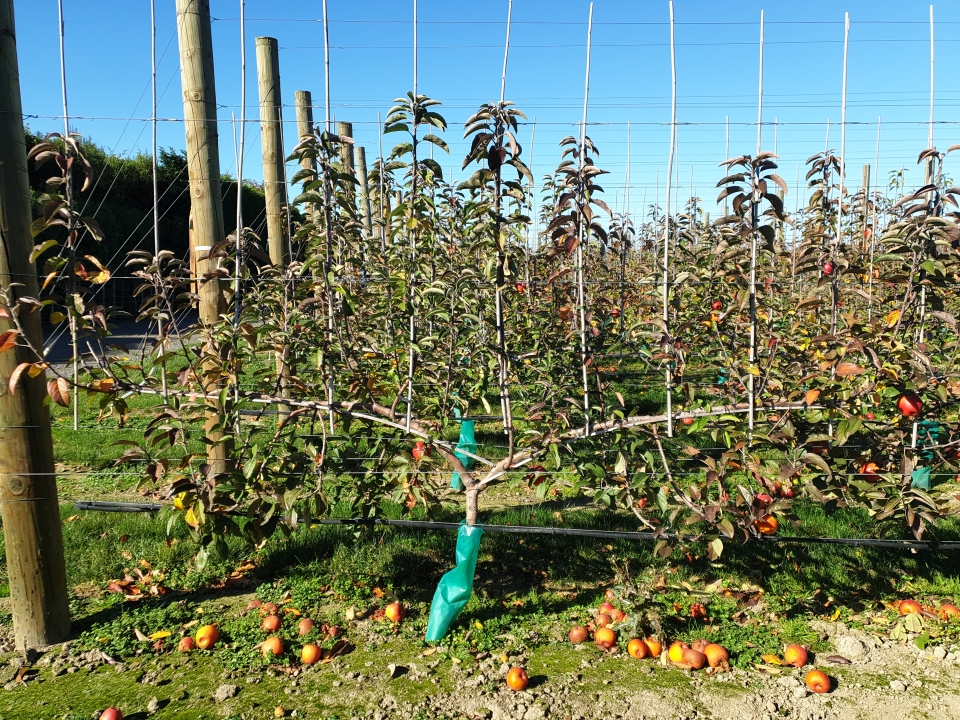
At this trial orchard different growing methods are being tested. You can see how these trees have been attached to wires to keep branches growing in line. Why would it be helpful to grow fruit trees like this? Image: Shelley Hersey LEARNZ.
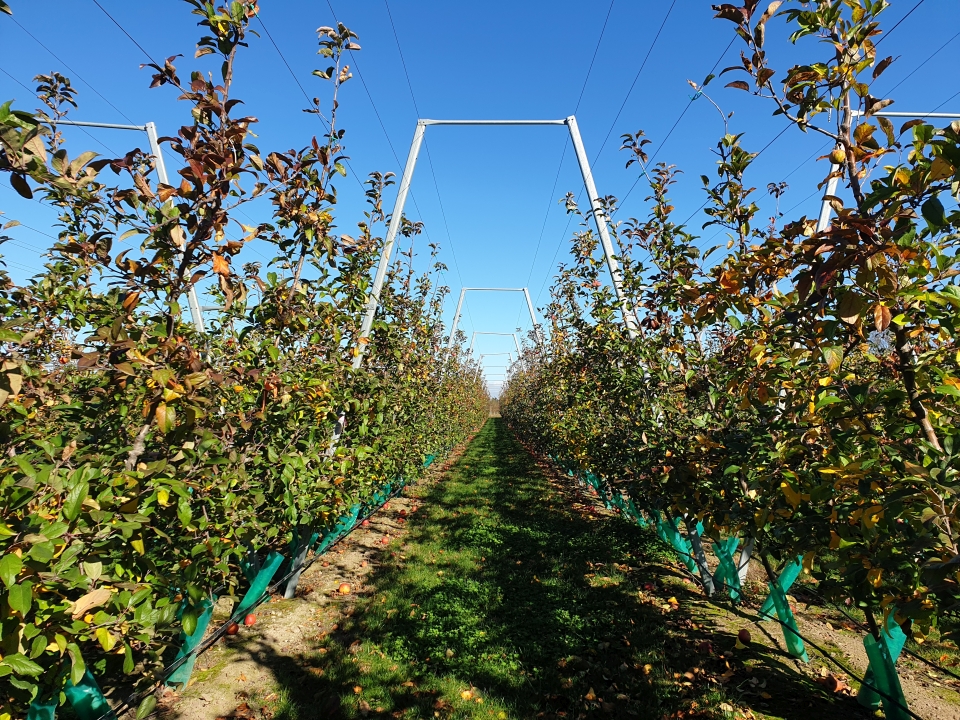
These apple trees are attached to a V-shaped trellis to make it easier to pick apples and increase air flow and exposure to sunlight. Fallen apples are composted to return nutrients to the soil. Image: Shelley Hersey, LEARNZ.
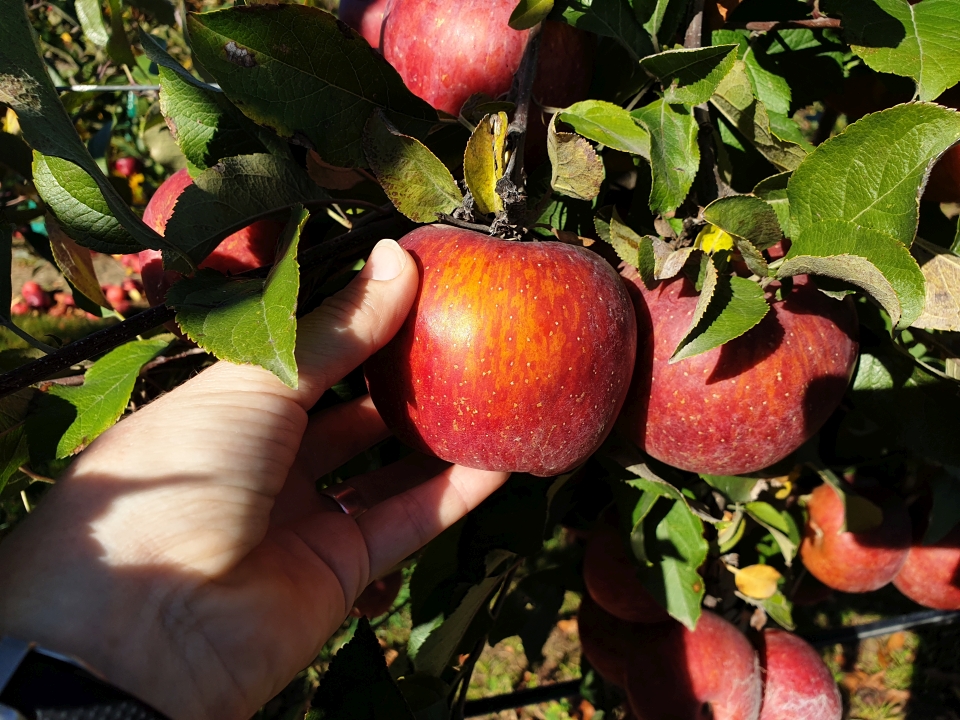
Some apples have not been harvested because they ripened too late or were not of a high enough quality. What do you think happens to these apples? Image: Shelley Hersey, LEARNZ.
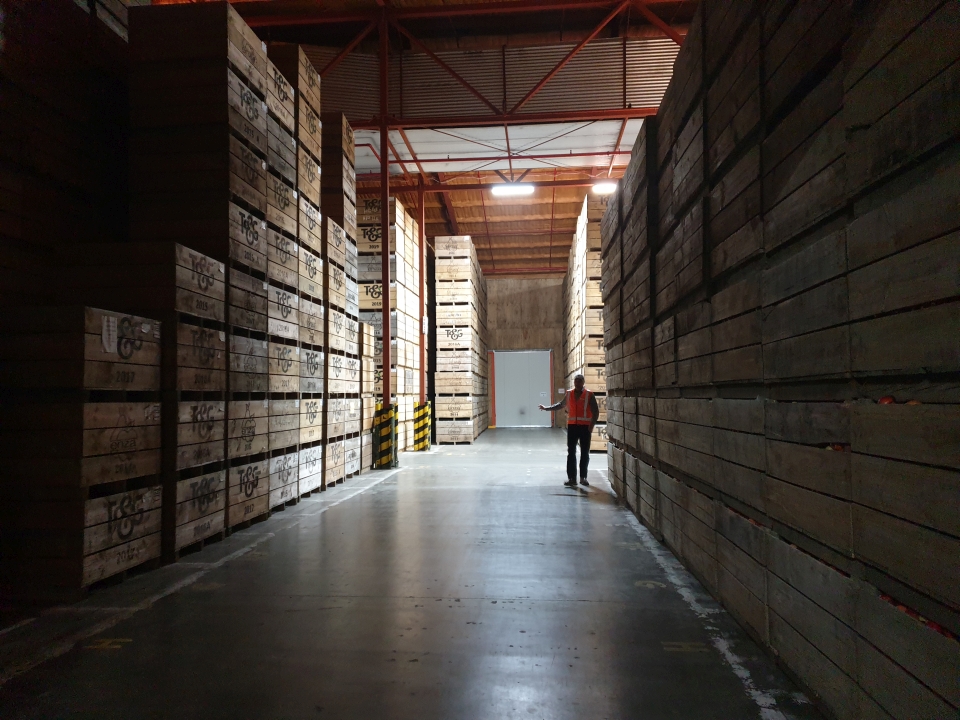
Once apples are picked and placed in bins they are moved to a cool store until they can be packed. Image: Shelley Hersey, LEARNZ.
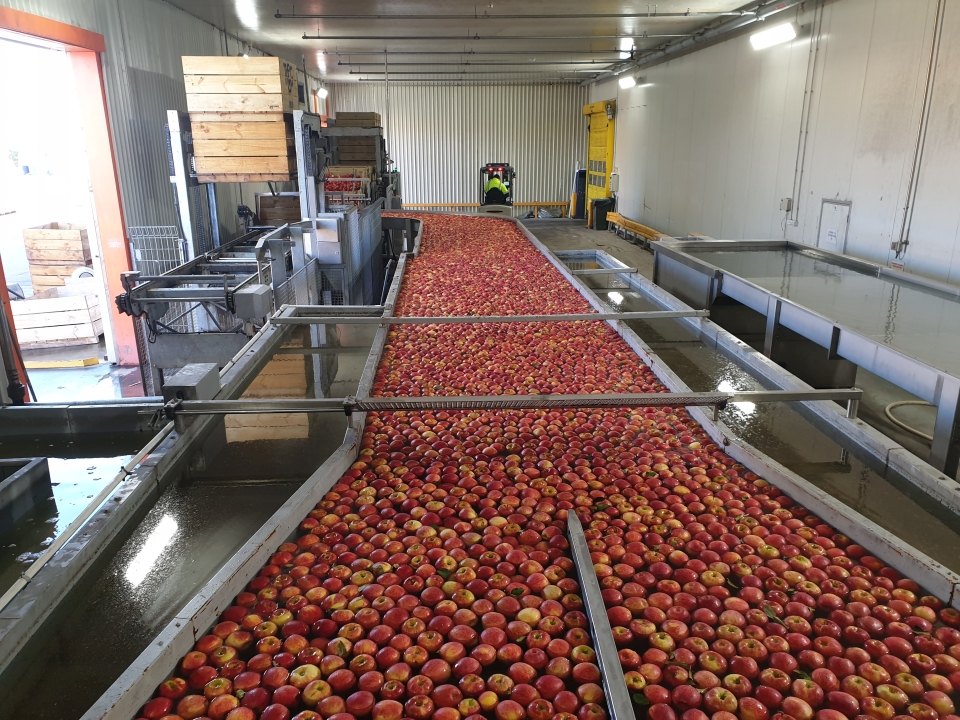
Apples are tipped from bins into water where they float through to the pack house. Why do you think the apples are placed in water? Image: Shelley Hersey, LEARNZ.
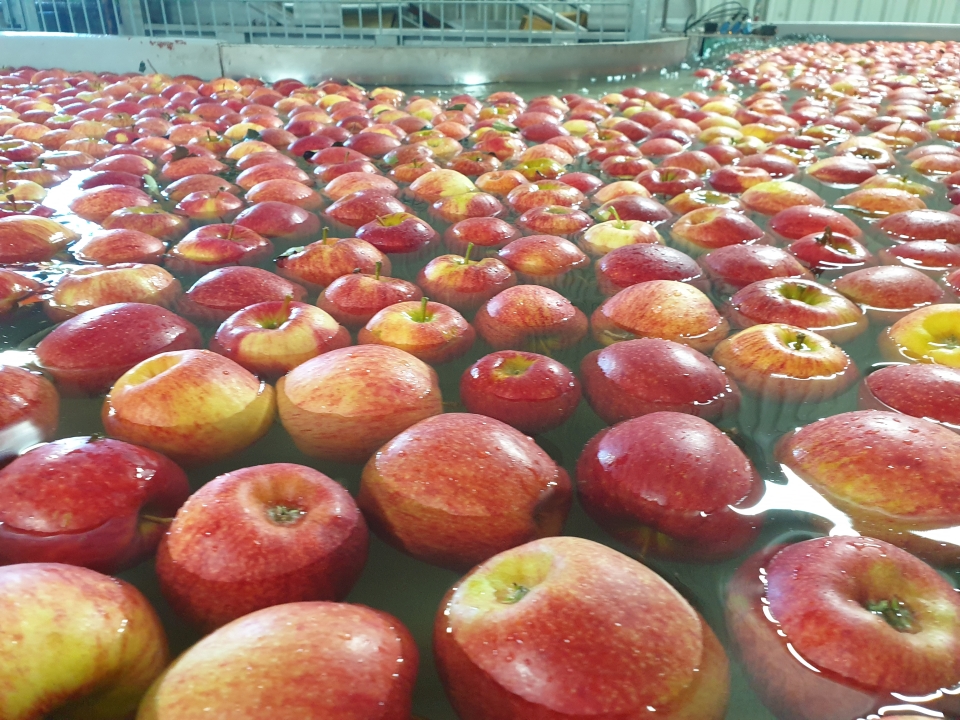
Apples float in freshwater through to the pack house. Image: Shelley Hersey, LEARNZ.
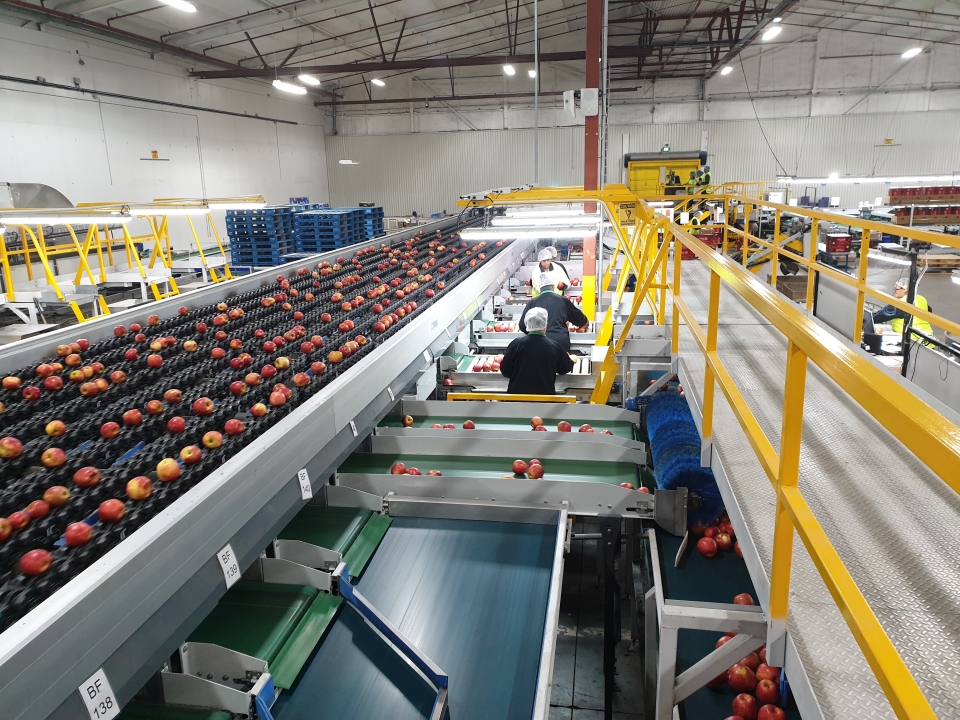
Inside the pack house apples are graded according to weight, size and colour. Image: Shelley Hersey, LEARNZ.
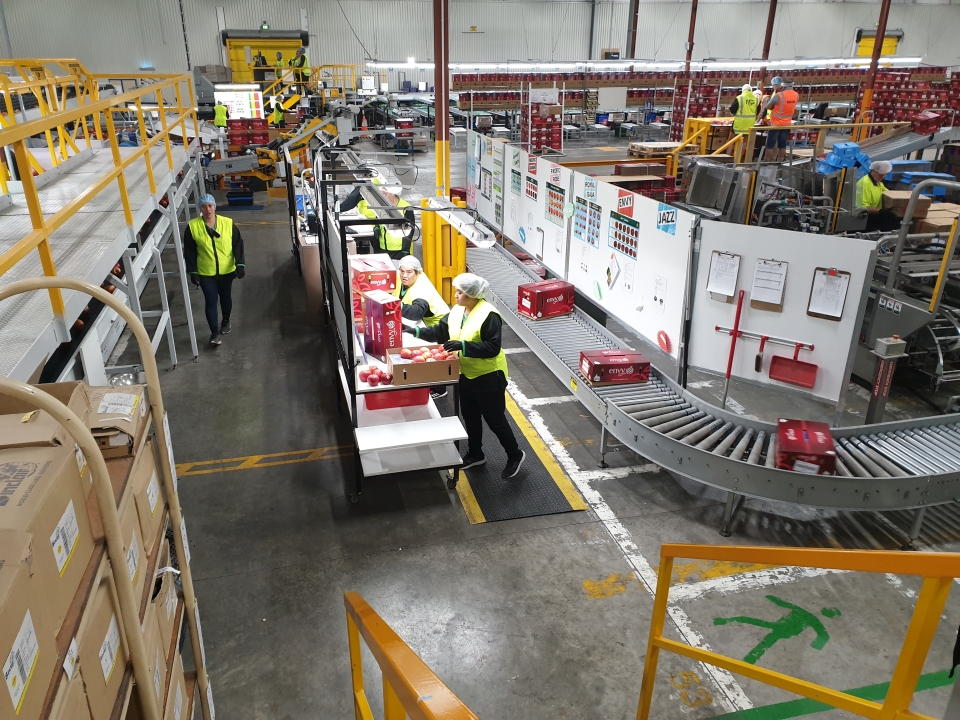
Apples are placed in moulded paper trays and packed into cardboard boxes ready for export. Image: Shelley Hersey, LEARNZ.
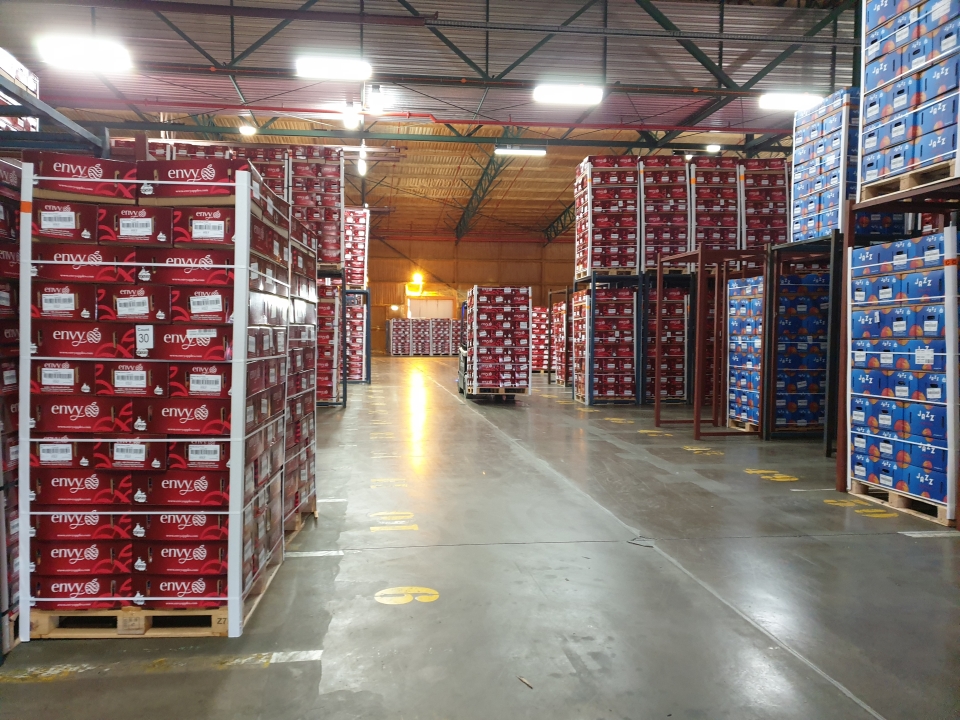
Apples are stored in a cool store at a temperature of 0.5 degrees Celsius. Why do they need to be kept this cold? Image: Shelley Hersey, LEARNZ.
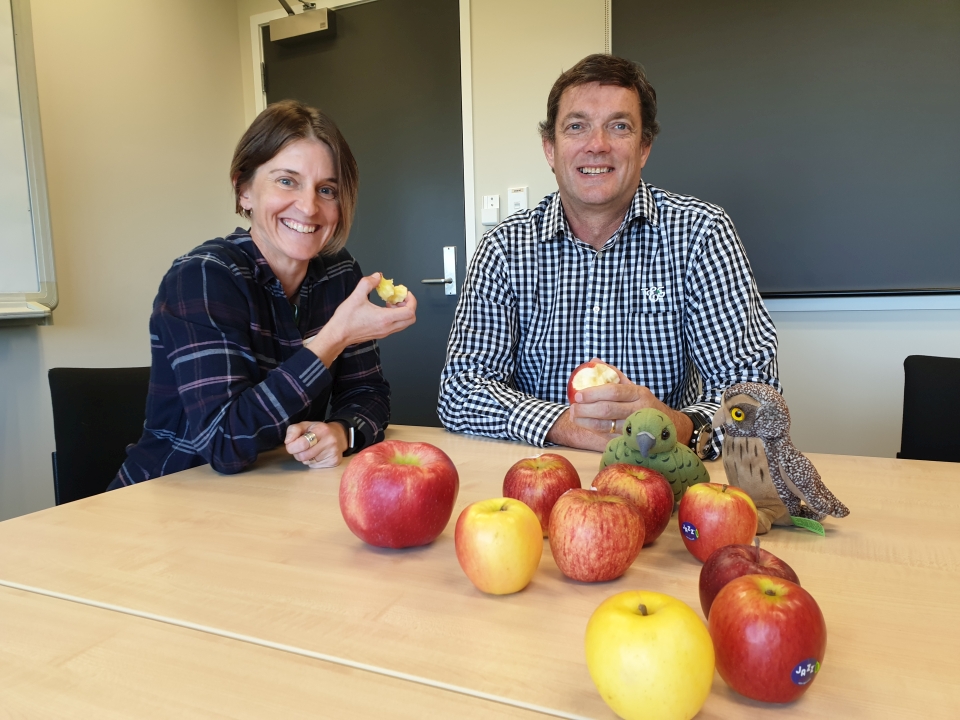
Shelley and Duncan try some different apple varieties. Image: Andrew Penny, LEARNZ.